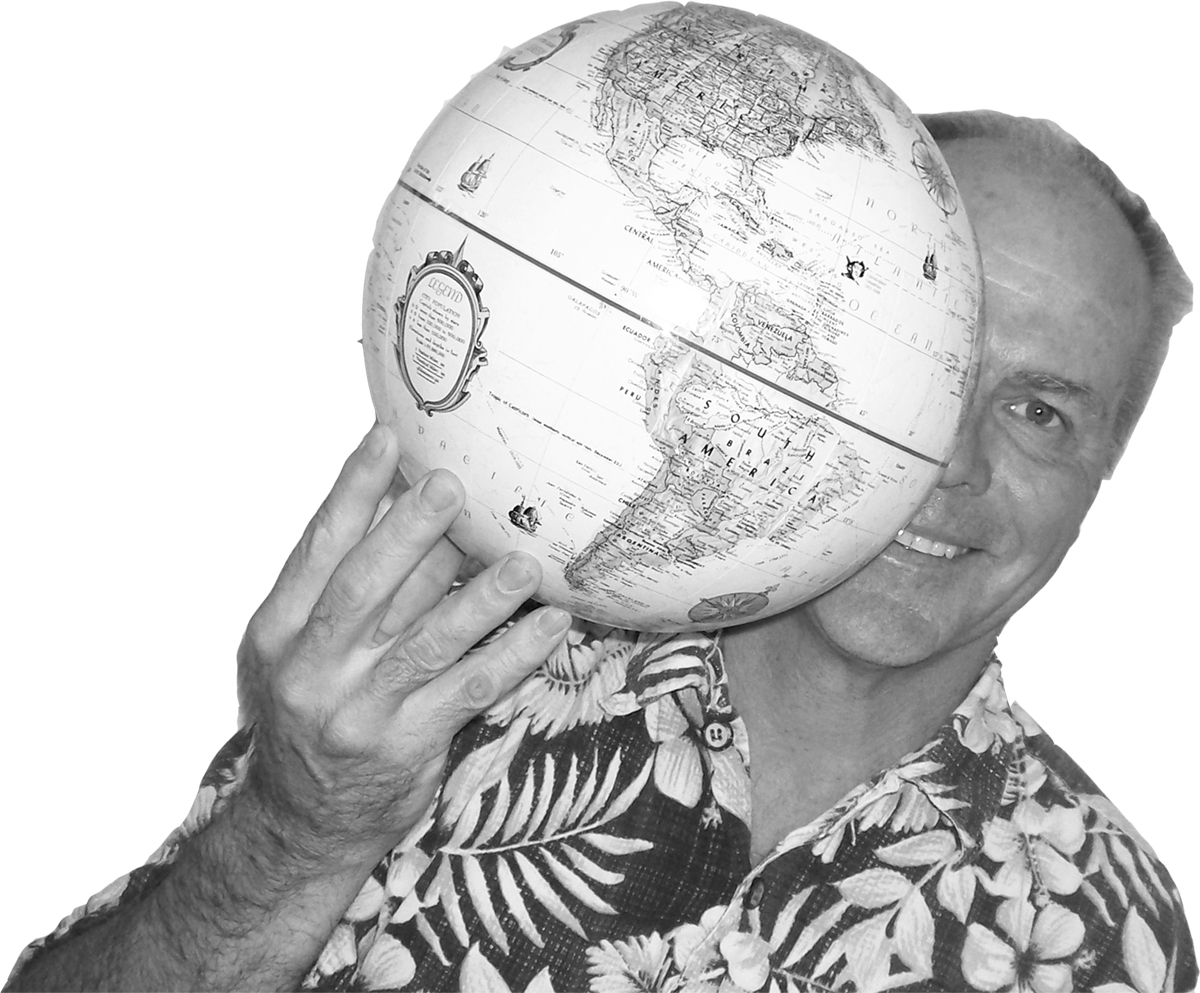A couple weeks ago I was in the tiny town of Goodland, at the eastern tip of Marco Island in Southwest Florida. Goodland is a quirky little town, and you never know what oddball adventure you’ll encounter there. And this visit didn’t disappoint.

It was a Saturday, and a small art fair and music festival was under way. I strolled past the booths of ceramics, paintings, and nature photography as John Prine lyrics echoed through the park. Savory scents of burgers and brats wafted on the air, and I ambled down to a small aluminum floating pier rocking in the salty backwaters between the mangroves and sea grapes.
On the pier was a man and woman, both in their fifties, getting ready to climb into a gleaming white inflatable boat with a small motor on the back. “Looks like a great way to commute,” I said.
We chatted about the boat as the man readied ropes and lines, and I asked several stupid questions, like do they blow it up and deflate it every time they go out.
“No,” the guy said, “we usually just pull it up onto the back of our other boat and leave it there until we need it.”
Oh. I get it. This awesome little “I-would-die-to-have-one” boat was their tender — the moderately expensive small boat you use to tool back and forth to your very expensive big boat.
“And where is the big boat right now?” I asked.
The lady pointed out past the mangroves. “It’s anchored out there in the Marco River in deep water. It’s too big to bring close to shore.” Of course.
It was a beautiful, sunny, warm day, and the man squinted up at the sky. “Looks like another great sailing day tomorrow. We’re off for Key West in the morning.”
Key West? That was something like a hundred miles away, down past the Ten Thousand Islands of the Gulf Coast, over the open Gulf of Mexico.
“We’ll kick back there for a couple days,” the lady said. “And then it’s up the Atlantic.”
“Seriously?” I said. “You’re a hundred miles up the Gulf Coast right now, and then you’re going up the Atlantic Coast, on the other side of Florida? Where are you coming from?”
“Kentucky,” she said, and this time my jaw dropped all the way to the aluminum pier. “Have you ever heard of The Great Loop?” she asked. No, I hadn’t. They were anxious to get on their way, but she gave me a minute-long summary that prompted me to dive into deeper, when I could check with Mama Google later that day.
The Great Loop is a bucket-list sailing route popular among boat-lovers who have plenty of time — and even more money — to spare. And when they call it “Great,” they mean GREAT, because it spans something like 6,000 miles, and it takes a year to complete for most who give it a go. Sometimes more.
Although there are a few alternate ways to go, The Loop spans the entire eastern part of the United States, from Canada in the north to the Gulf in the south, from the Mississippi River in the west to the Atlantic Ocean at the east.
Loopers travel on both natural and man-made waterways, including the Atlantic and Gulf Intracoastal Waterways, the Great Lakes, the Rideau Canal, and the Mississippi and Tennessee Tombigbee Waterway, including the 184-mile stretch of Kentucky Lake. Most, like this couple, travel The Loop counter-clockwise.
Although it originated in Chicago, Loopers can begin at any point, and can even break it up into segments. When they return to their starting point they are said to have “crossed their wake.” While on The Loop they fly a white burgee, or triangular pennant. After they cross their wake, they have earned the right to fly a gold one.
Naturally, they tackle the northern part of The Loop during summer months, and try to be at the southern part during the winter. This couple were no exception—they had been sailing south from Kentucky since November or so, had entered the Gulf at Mobile, Alabama, by the start of the new year, and would be turning north along the Atlantic Intracoastal in late March and early April.
After turning west through the Erie Canal, they would follow the shore of the Great Lakes, looping through Chicago sometime around October. There they would take either the Chicago River or the Cal-Sag Channel to the Des Plaines River, which joins the Kankakee River to become the Illinois River near Peoria, then on to the Mississippi River for the final stretch back to Kentucky down at Paducah in November, a year after their start.
I was familiar with the Des Plaines and Illinois River part of The Loop, because over the years I have paddled my canoe in stages nearly the full length of the Des Plaines and part of the upper Illinois. So I guess that makes me a partial Looper, right? Or maybe just a little loopy.
Their preparations over, they climbed into their white inflatable tender and puttered away. I waved to them and wished them good luck, and they smiled and waved back. “Safe travels!” I called. “Have fun in Key West!”
Really nice couple, I thought as I waved them farewell, a young pair living out a bucket-list dream that takes a lot of free time and a lot of money to complete. “I’ll wave to you when you sail past in Chicago!” I said, and they laughed.
But it’s hard to make your voice sound cheerful when your jealous heart wants to curse someone.
TR Kerth is the author of the book “Revenge of the Sardines.” Contact him at trkerth@yahoo.com.




